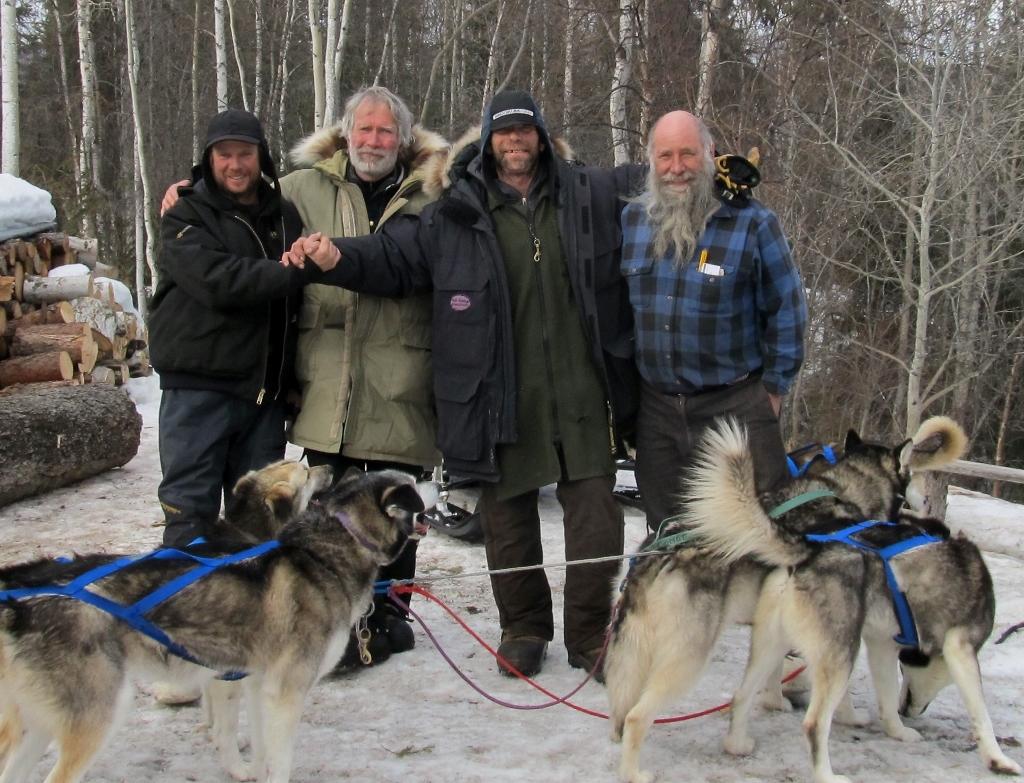An international team of explorers returned last week from a grueling 700-mile dog-sled journey from the Arctic Ocean to Eagle, Alaska. They were the first to re-trace the route that legendary explorer Roald Amundsen took in 1905 after his historic transit of the Northwest Passage.

Winds were howling on Feb. 28 when the three explorers set down on Herschel Island, just off the coast of Yukon Territory about 50 miles east of the U.S.-Canada border. A breathless videographer announced their arrival after they flew in from Inuvik, Northwest Territories.
“Here they are, Tim Oakley, Wayne Hall, Graham Burke, out here on Herschel Island,” they said.
Oakley, Burke and Hall had already been on the trail for eight days. And after a day’s rest on the island, they set out for the return trip to Eagle on the route Norwegian explorer Roald Amundsen took in 1905, after he’d navigated the Northwest Passage – the first known transit of the icy route along Canada’s northern coast. Amundsen went to Eagle because it was the closest telegraph station – and, Oakley said, he wanted to get to get the word out about his historic voyage.
“He wanted to tell the world that he’d done it,” said Oakley. “So he made a 700-mile sledging journey from Herschel Island to Eagle.”
Oakley was born in Canada and grew up in the U.K., and he’s a fellow with the Royal Geographical Society. He says the society supported the expedition in part as a learning opportunity for students in Alaska, Canada, Norway and the U.K., who were able to monitor his journey through a blog he posted to the project website titled “In Amundsen’s Footsteps.”
“The educational program is to highlight the fragility of the Arctic regions, and climatically, what is happening up there,” Oakley said.
Oakley said this wasn’t a scientific expedition, but rather a journey that might offer a snapshot of changes under way in the region. For example, he says Amundsen traveled over the frozen Yukon River when he set out in October 1905 – which might not be possible today.
“Last year, the river didn’t freeze up at Eagle ’til about mid-December,” said Oakley.
Oakley said the warming climate probably led to the early breakup and overflow of the Firth River in far northern Yukon Territory. The flood soaked the three mushers and their dogs on the second day of their journey, and they spent a miserable 48 hours waiting for winds to die down.
“I think for all of us, the Firth was the most difficult part of the whole expedition,” Oakley said. “It was extreme.”
Burke said Hall’s outdoorsman savvy helped the team survive the ordeal.
“I don’t know that we would’ve gotten through without Wayne’s skills,” said Burke.
Oakley said his team had been trying to maintain the same timeframe as Amundsen’s expedition. But he says they picked up the pace near the end of the journey as they were approaching Eagle.
“The weather started to get warmer and warmer, and the snow conditions were starting to get difficult,” Oakley said. “And running dogs in hot weather is not particularly desirable.”
Oakley and Burke said the huskies Hall raised at his home in Eagle deserve most of the credit for the successful expedition. And Oakley said they also appreciate support from others who run or race dogs.
“I think the heroes of this, as Graham’s pointed out, are the dogs,” said Oakley. “They are exceptional dogs. And I think we were very lucky that we had a lot of mushers from the Yukon Quest and from the Iditarod who were following us.”
Burke, who’s worked with dogs in his native New Zealand, said the team’s respect for animals shows another difference between the two expeditions.
“Back in Amundsen’s day, the dogs were an expendable commodity, if you like,” Burke said.
He says all 22 huskies returned home safely. And one even gained a few pounds out on the trail.
Tim Ellis is a reporter at KUAC in Fairbanks.




